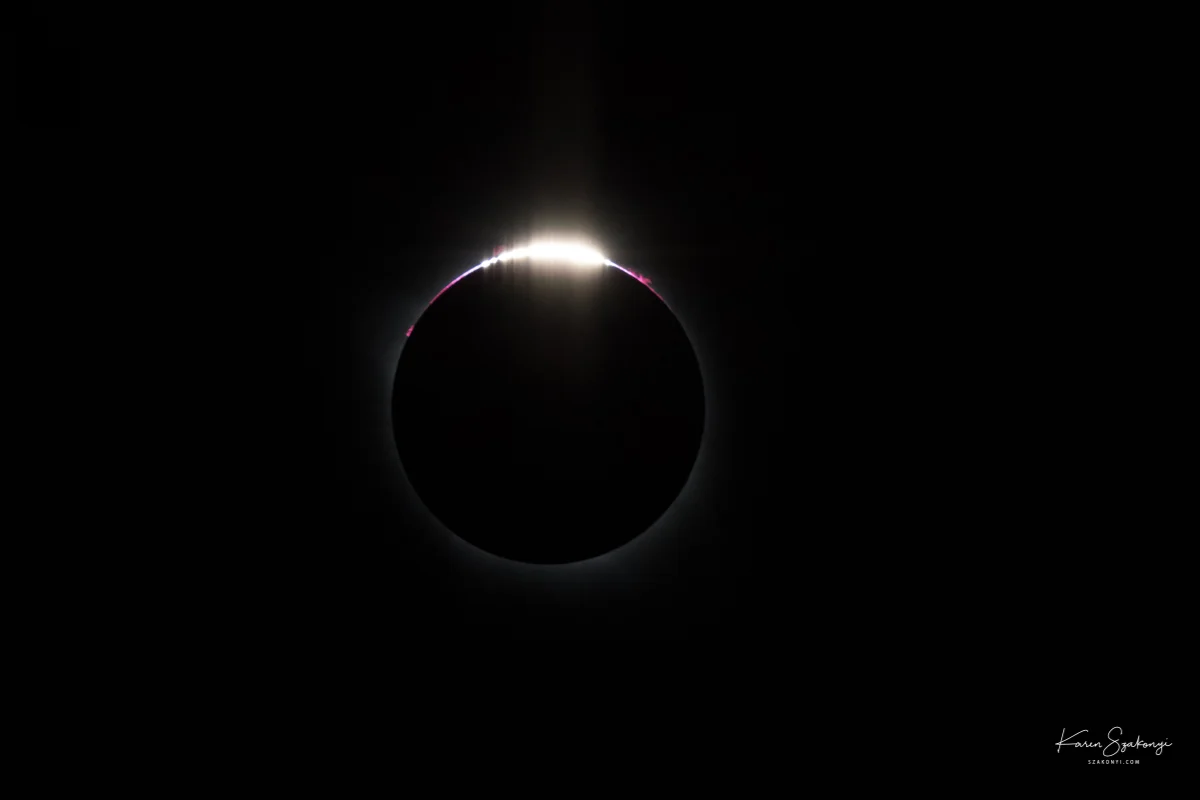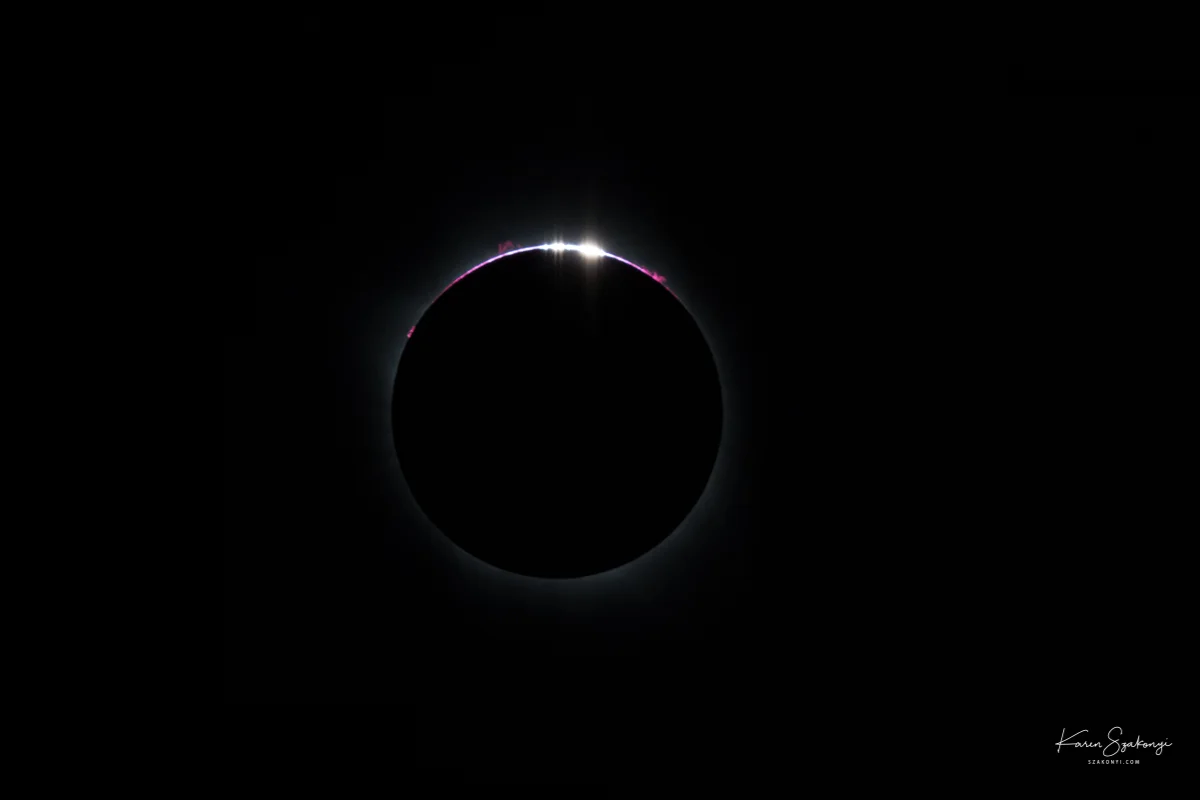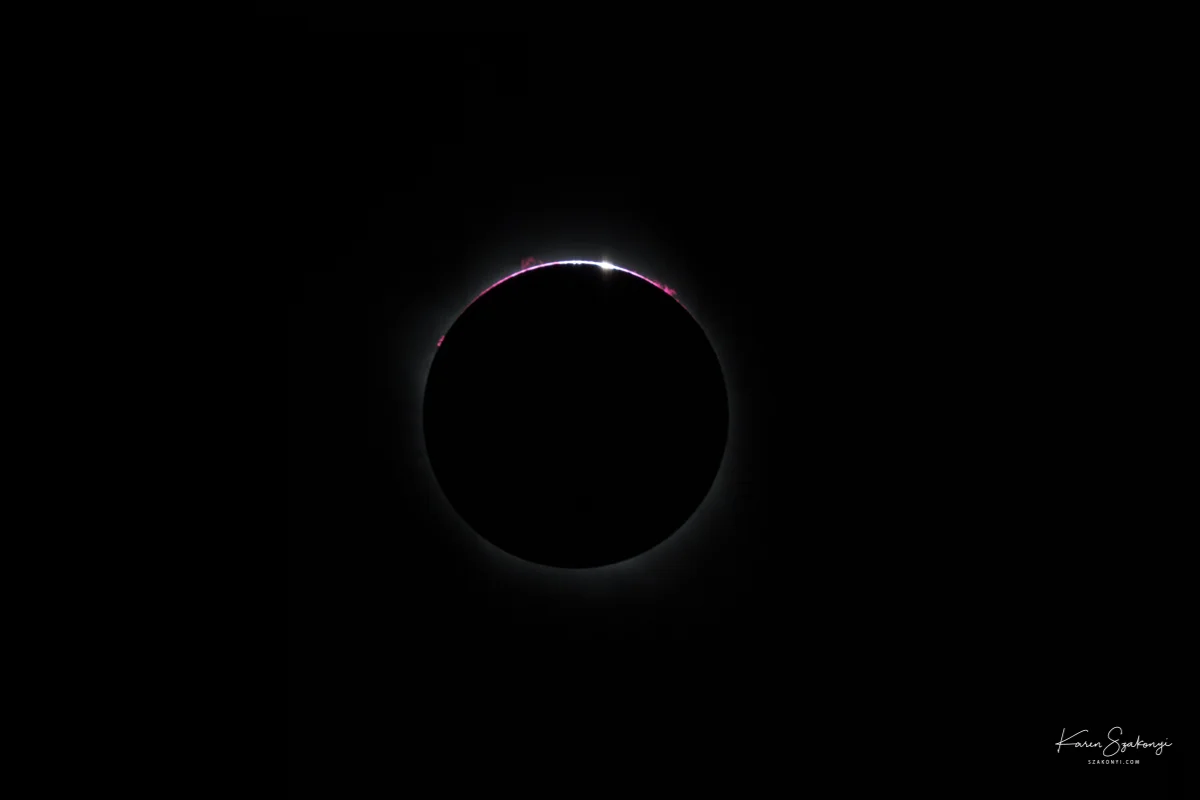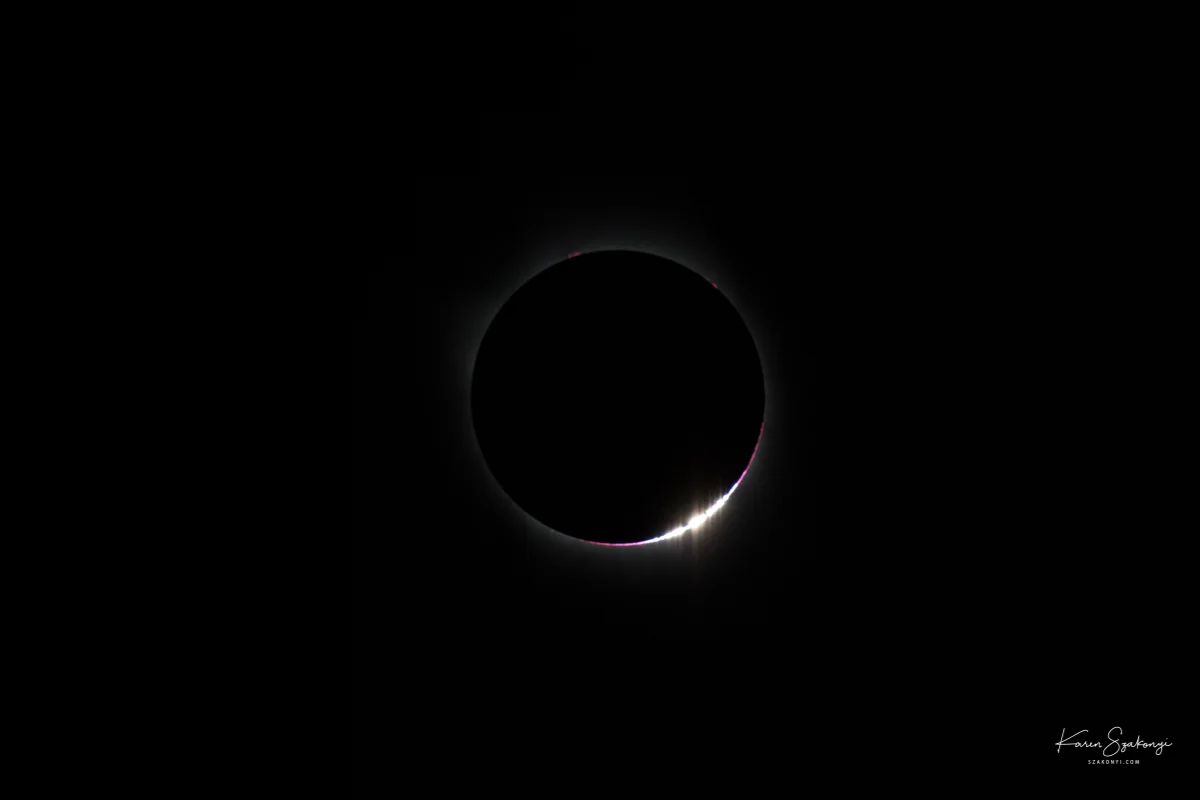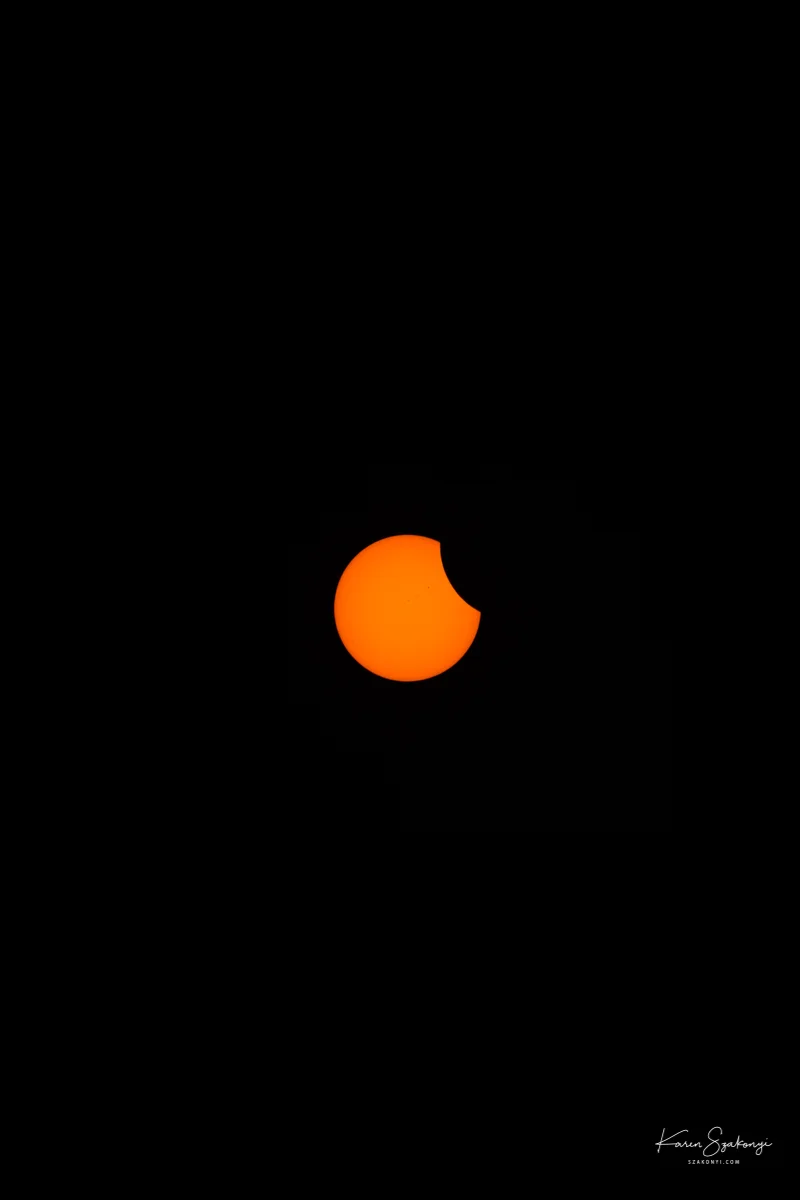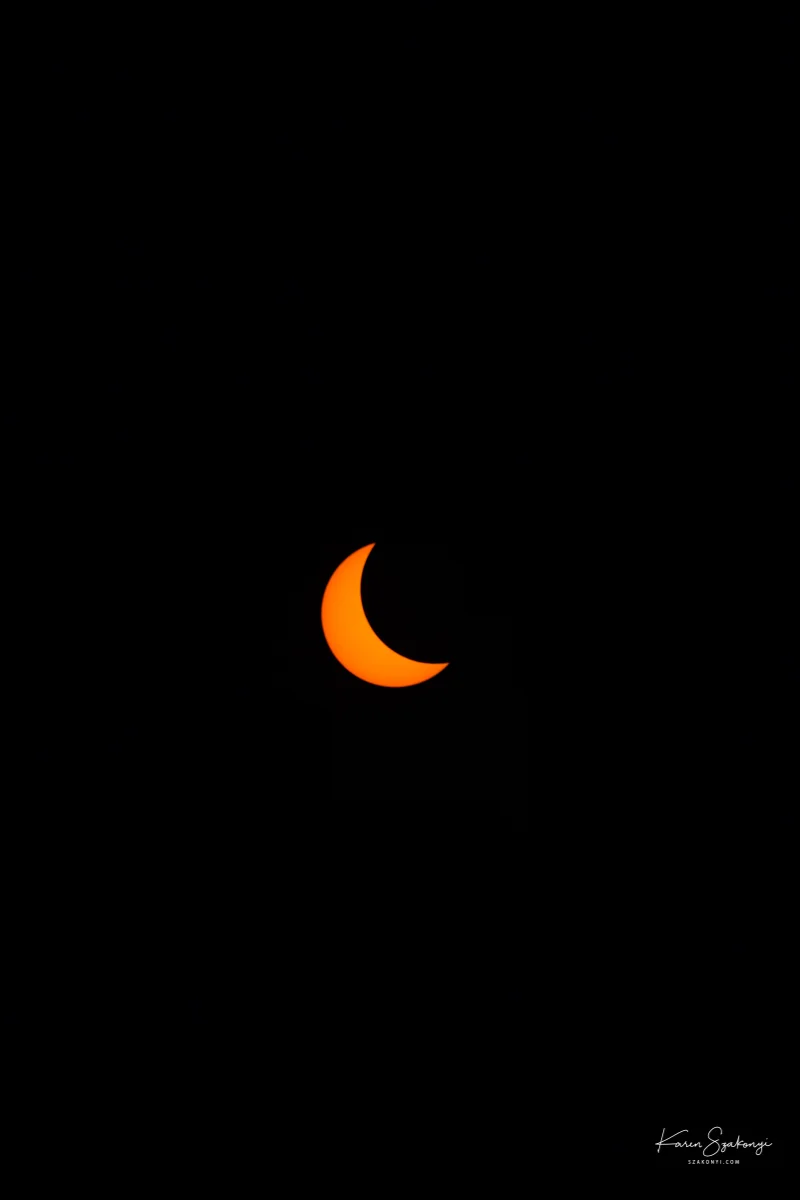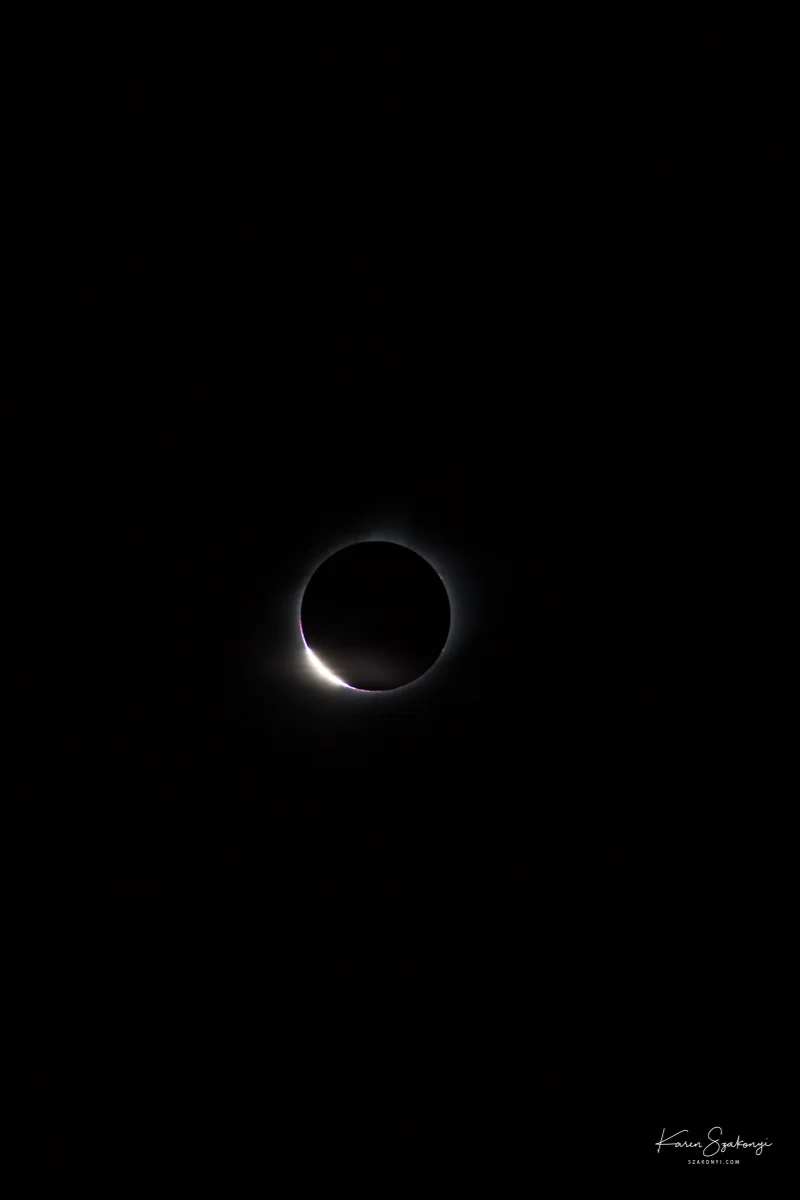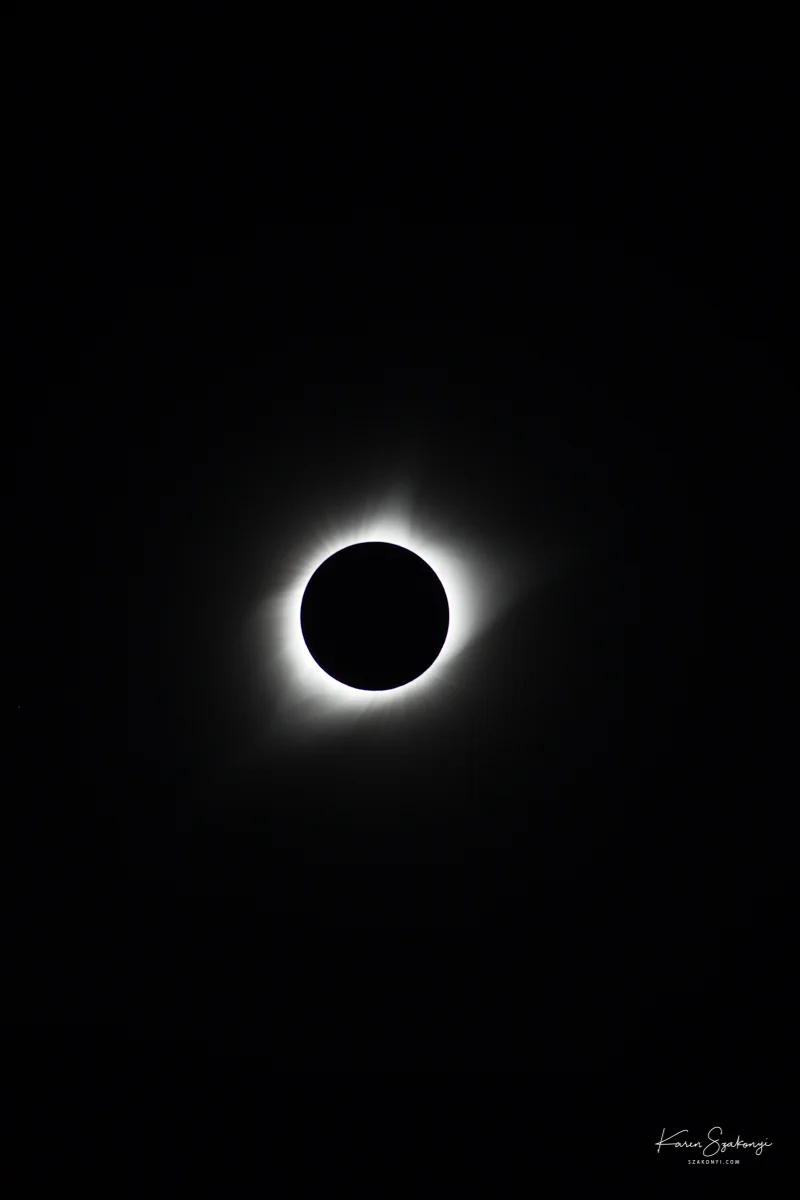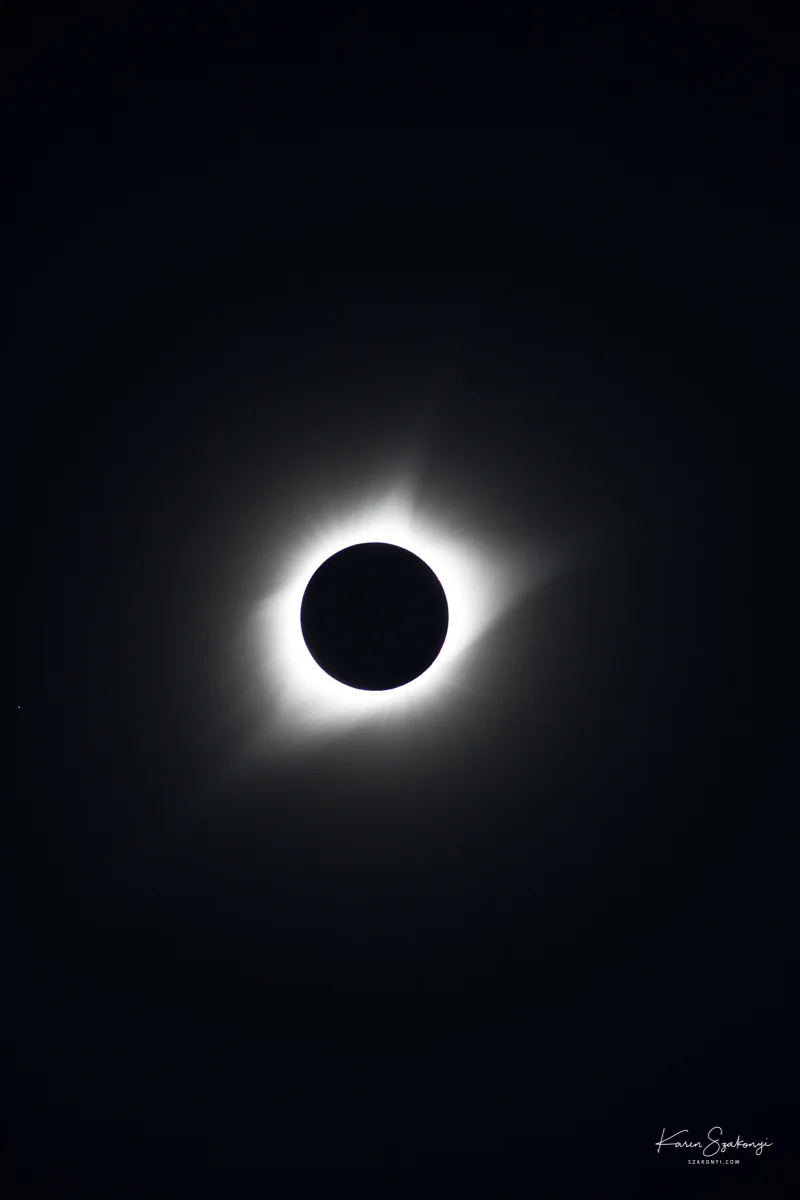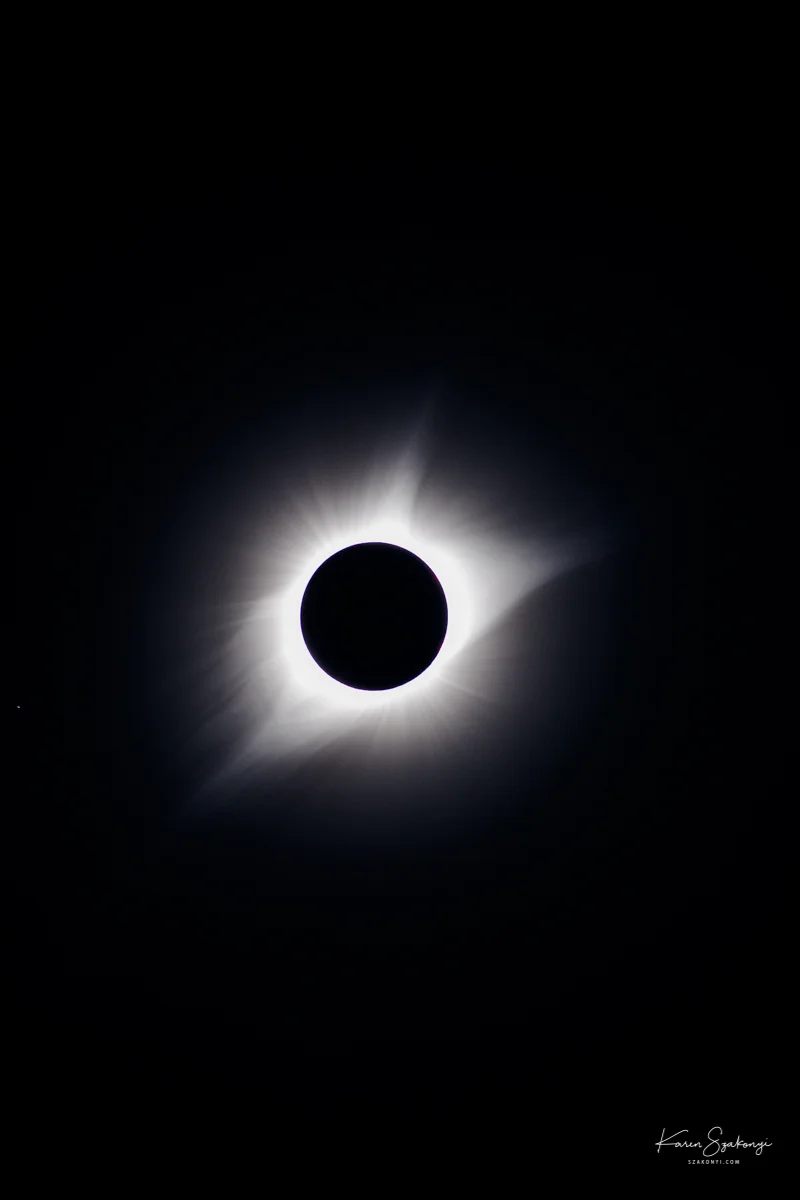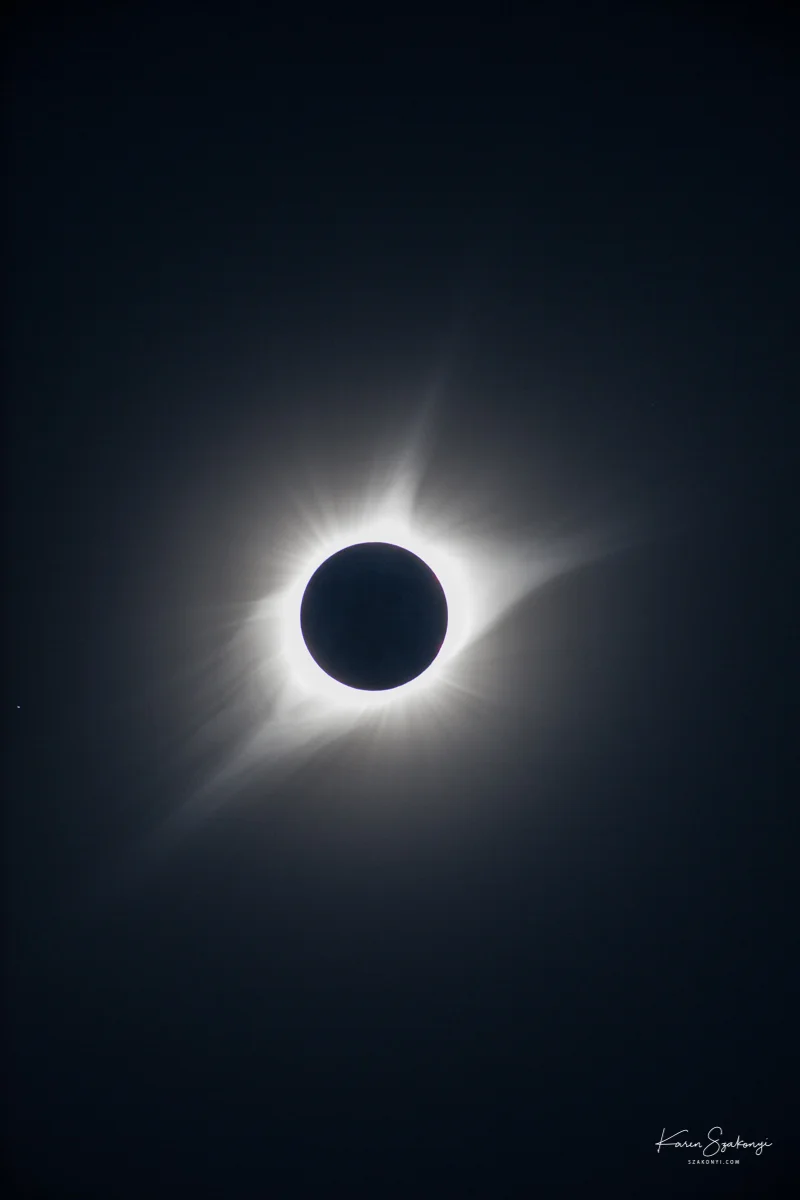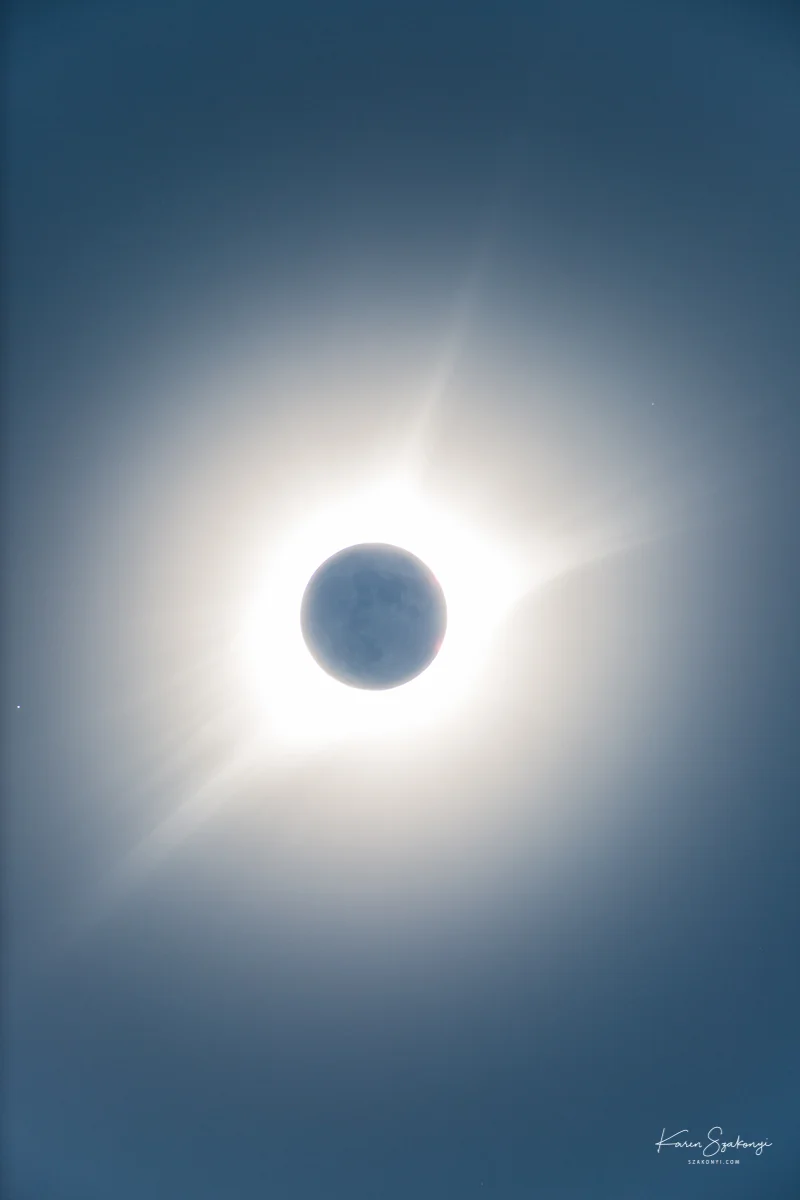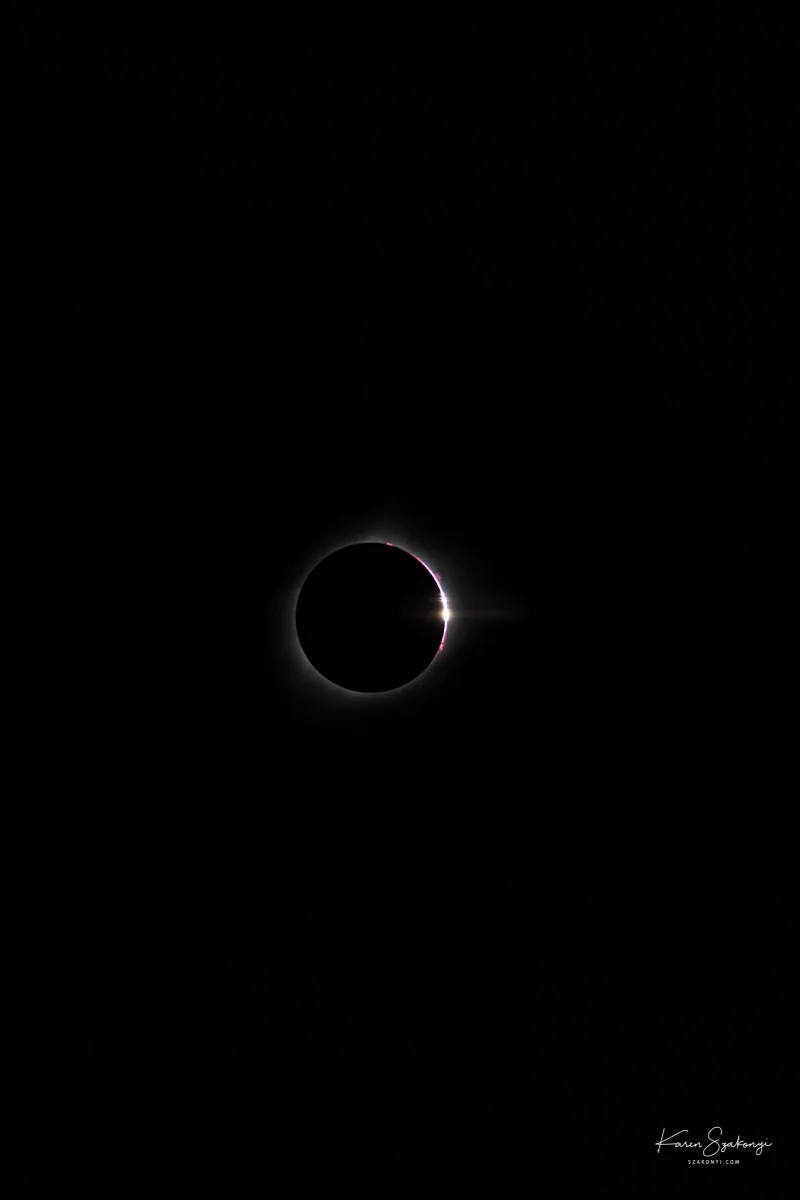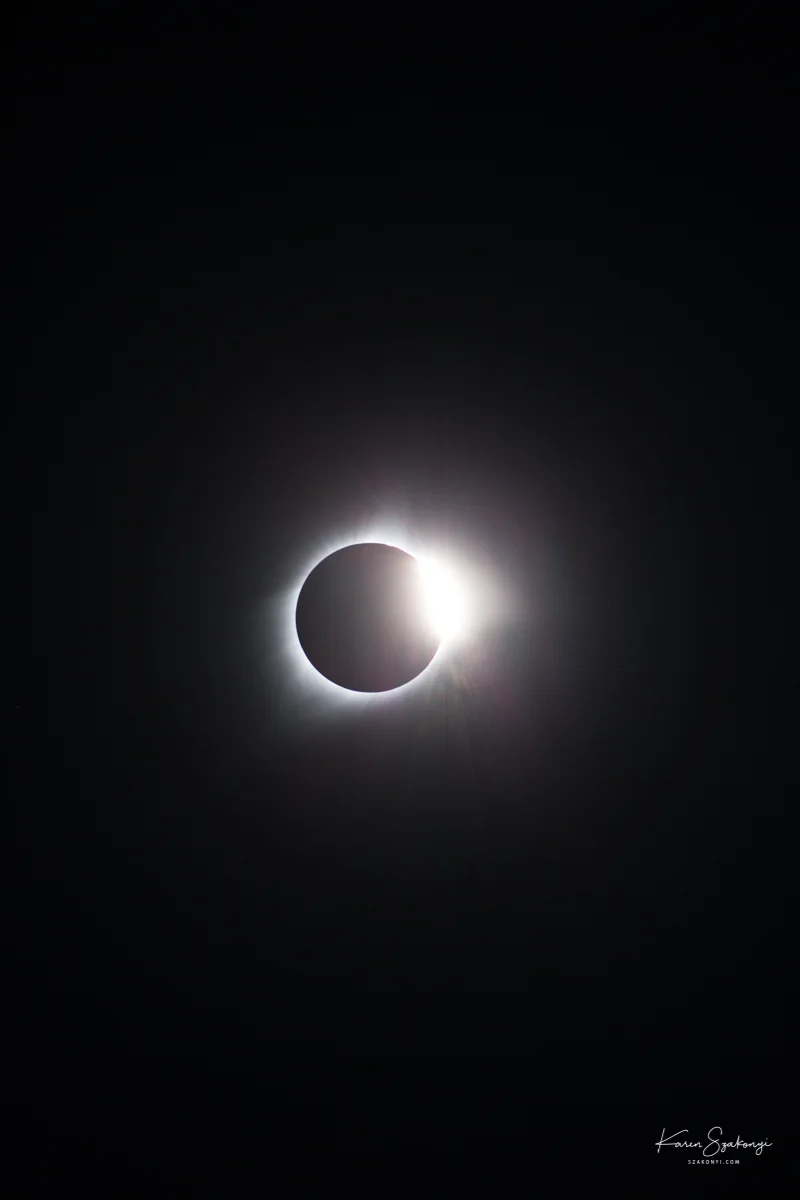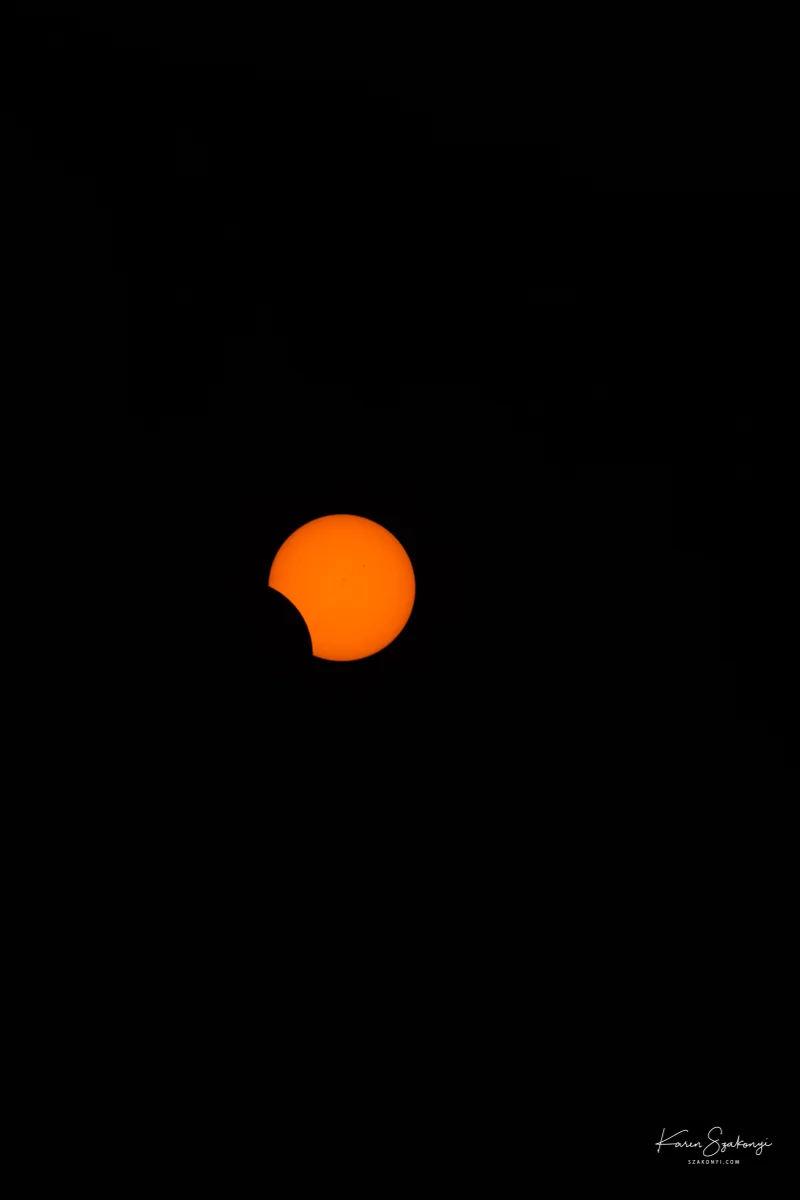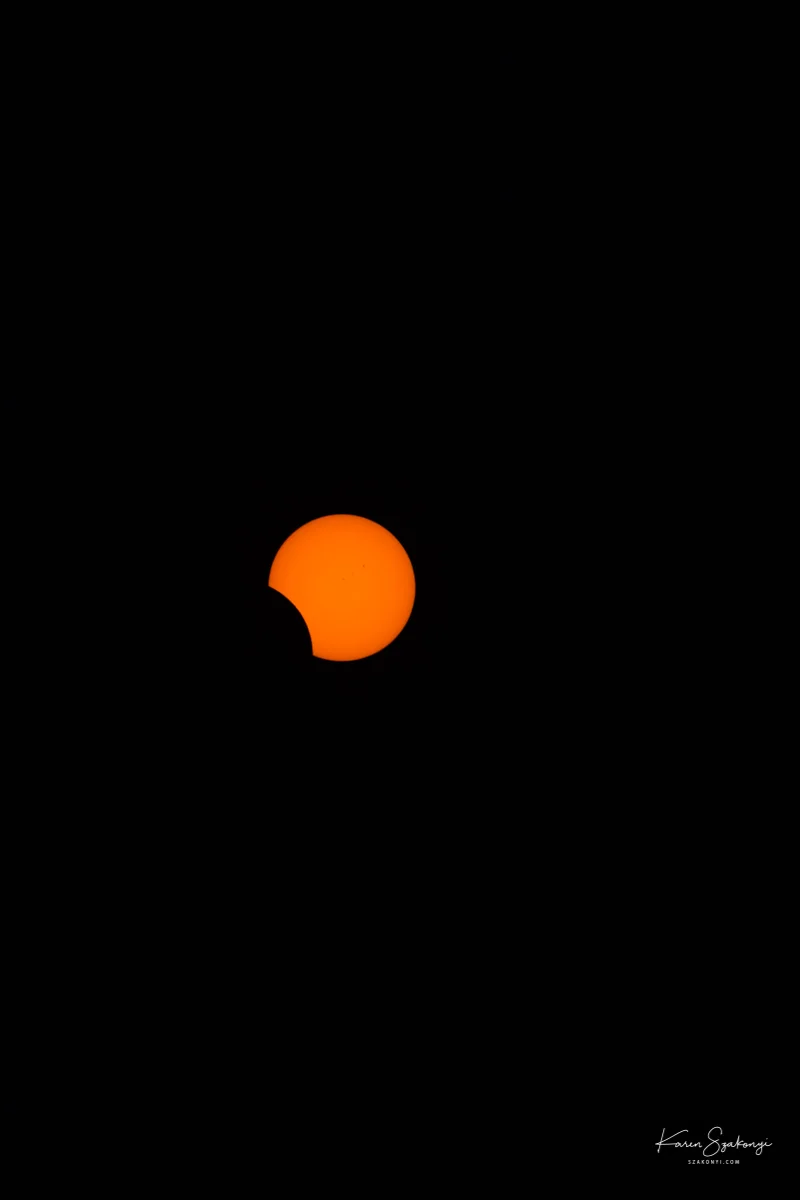The solar eclipse was an event of a lifetime. We went to John Day, Oregon and had spectacular weather for the entire event.
The stages of the solar eclipse, August 2017.
BAILYS BEADS
There are just a second or so, as the moon covers the sun, and then when the moon first leaves the sun where “Bailys Beads” are displayed. Four shots below are from my Canon 60d-a through a Canon 100-400mm lens. You can see the sun flares, in these shots, and it is the only time you can catch sun flares unless you have a certain type of solar telescope. The shots where the sun is on the top are at the beginning of the totality, and the one shot where the beads are facing down is just coming out of totality. These photos were not enhanced, they came out of the camera exactly as you see them.
CORONA
The Corona is a sight to behold. When the sun is fully covered by the moon, it is safe to look directly at the eclipse. The corona just shimmers and it is simply stunning. Pictures cannot do it justice. During totality, you can see stars and planets. Unfortunately totality went by so fast, that it was hard to take in everything you could see. The star Regulas is visible to the left of the sun in the photo below.
Corona, where the moon fully covers the sun and the sun flares from behind the moon.
PHASES of the Solar Eclipse
The orange photos are of the sun as the moon is in different stages of covering the sun. At this point it is not safe to look at the sun without special glasses and the camera has to have a solar filter covering the lens. The photos where the moon totally covers the sun, is when you can look at the eclipse directly, and at that point you wouldn’t be able to see anything through the solar glasses. Below are shots of the sequence of the solar eclipse. What was surprising was how nice the corona, diamond ring and Bailys beads photos were right from the camera.
LUNAR ECLIPSE
Not all eclipses are solar. In 2015, there were four lunar eclipses, and one occurred during a nice warm evening in September, and the lunar eclipse lasted long enough to get a chance to get a photo where the stars were out and visible. This was a bit longer eclipse, and was on a clear evening. This photo was taken with a Canon 5dmii through an Explore Scientific 80mm telescope all on an Equatorial mount. Two of the lunar eclipses were clouded out, and one was a very short eclipse and it was quite cold. One year, Steve and I went out during an eclipse in the middle of the night to a location where it was 18 degrees. Steve sat in the car, while I took photos, but that evening just as the full eclipse occurred the clouds rolled in and covered it. In September 2015, the weather was clear and the eclipse was beautiful.
